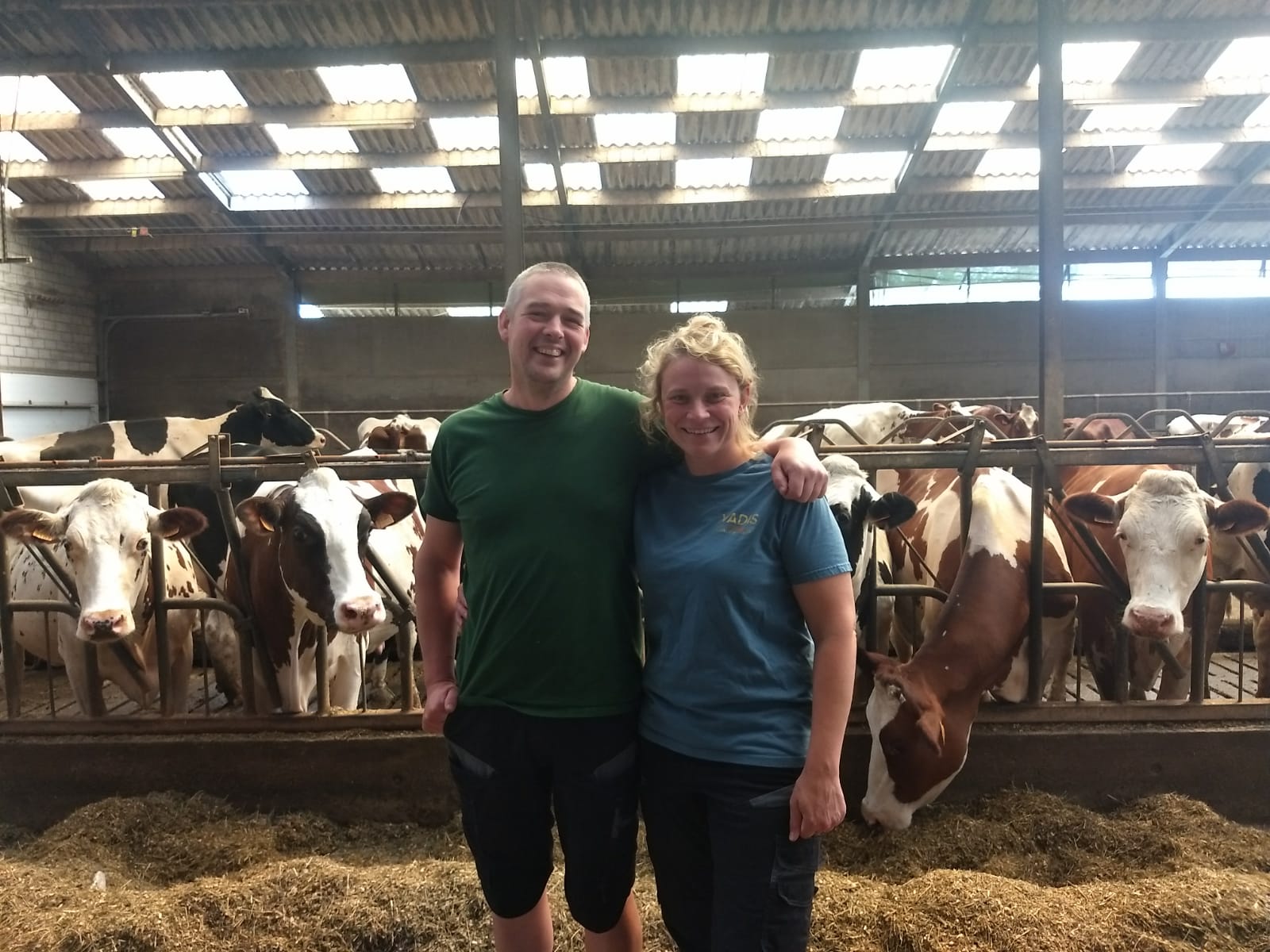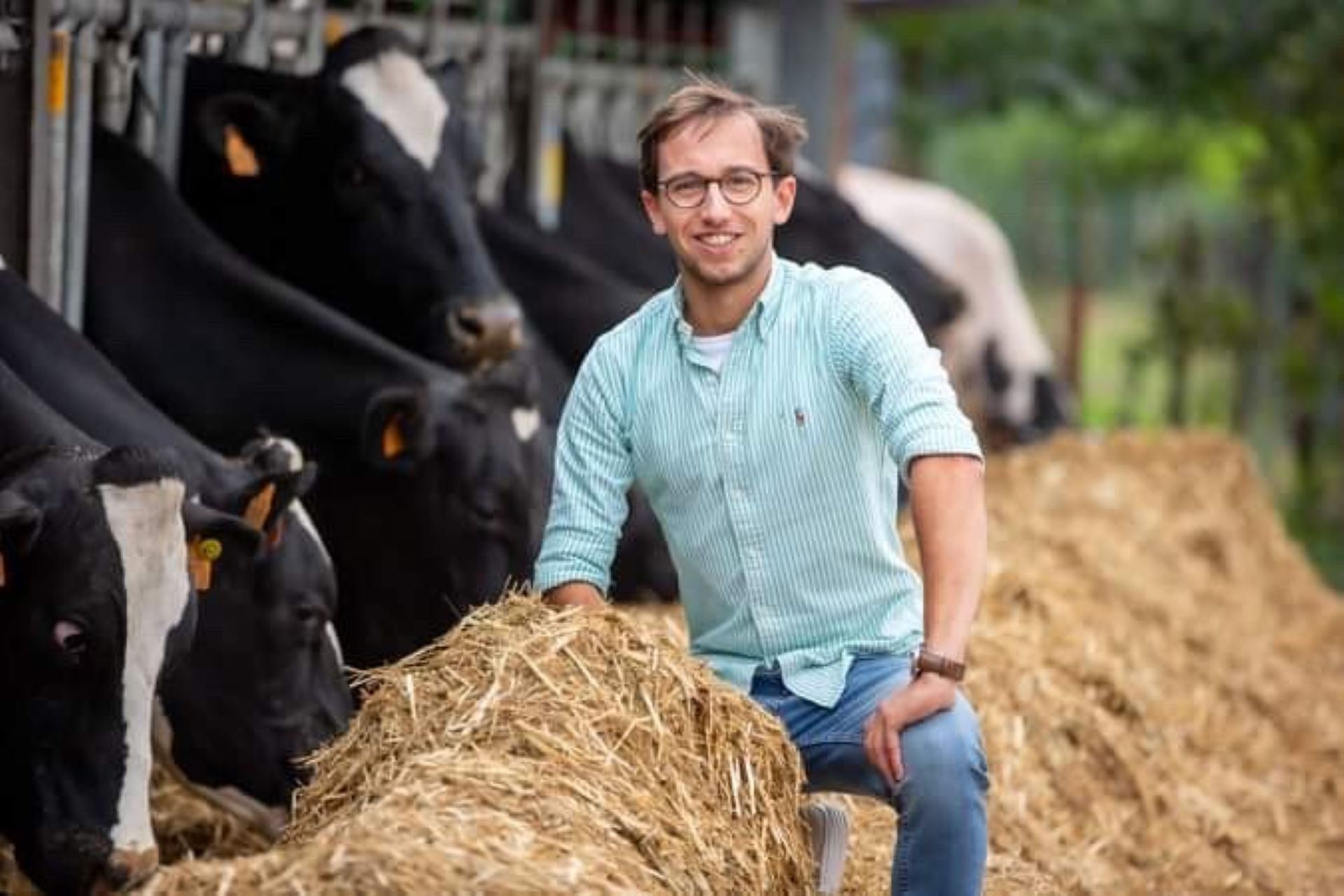Calf rearing
The newborn calf receives adequate colostrum and then milk from its own mother for another 3 to 4 days. Bull calves continue to receive cow's milk (up to 12 litres per day) with heifer calves reared on CMR from four days old, building up to an intake of 8 litres per day to supply just over 1 kg of CMR per day.
One week after birth, chopped barley straw is provided alongside the calf pellet (which also contains OmniGen) with Mieke noting that straw as a supplement works better than hay, ensuring calves continue to consume sufficient concentrate in their early life.
Weaning occurs at 11 to 13 weeks of age when calves are consuming 2 kg per day of the starter pellet. Between 3 and 6 months, calves are fed the dairy ration, further supplemented by 2 kg of rearer pellet. Between 6 and 10 months, dairy concentrate is provided and there is a reduction to 0.5 kg of concentrates at that stage (to 1.5 kg per day). From 10 months of age, only grass silage is provided and depending on the quality of the silage, straw is sometimes supplemented. Bert and Mieke do not offer youngstock a separate mineral supplement to the young cattle until now, but recognise that supplementing this would definitely be useful to support fertility. "In cows, fertility is better than in young stock," Bert and Mieke say. Supplementation with a specific young stock mineral is therefore being strongly considered.
Engagements
Bert and Mieke are convinced of the importance of engagement in discussion groups, to promote the dairy sector.
For example, Bert is chairman of the dairy farming circle Boerenbond in his local area of Oudenaarde.
We had a pleasant conversation with 2 enthusiastic people who continue to look positively at the future in the dairy sector.
We thank Mieke and Bert for their enthusiasm, their openness in the conversation.
Stefaan Vander Meiren











